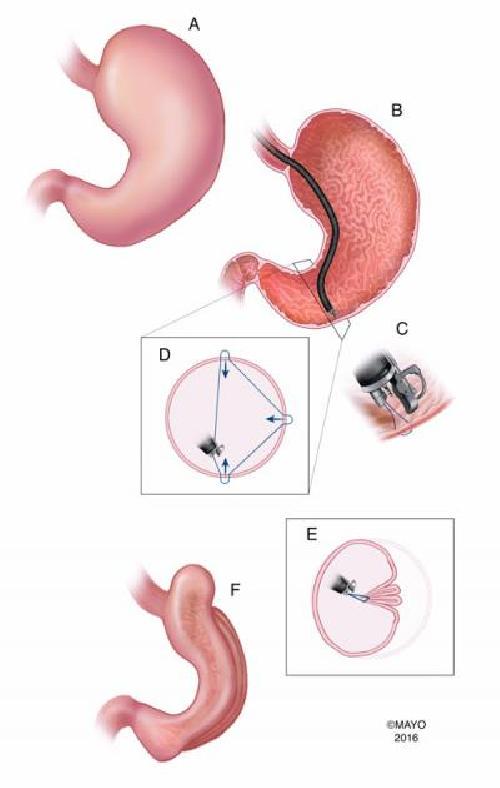Bethesda, MD (Jan. 20, 2016) -- In the fight against obesity, bariatric surgery is currently the most effective treatment; however, only 1 to 2 percent of qualified patients receive this surgery due to limited access, patient choice, associated risks and the high costs. A novel treatment method -- endoscopic sleeve gastroplasty -- might offer a new solution for obese patients. Endoscopic sleeve gastroplasty is a minimally invasive, safe and cost-effective weight loss intervention, according to a study1 published online in Clinical Gastroenterology and Hepatology (15)01714-0/abstract, the official clinical practice journal of the American Gastroenterological Association.
"Given the low use of bariatric surgery and limited effectiveness of lifestyle changes and drug treatments, a significant gap exists in our current approach to obesity," said lead study author Barham K. Abu Dayyeh, MD, MPH, from the department of gastroenterology and hepatology, Mayo Clinic, Rochester, MN. "Endoscopic sleeve gastroplasty offers an effective weight loss intervention at lower cost and higher patient satisfaction, potentially filling this gap in the management of obesity."
Endoscopic sleeve gastroplasty falls under the umbrella of endoscopy, a nonsurgical procedure gastroenterologists use to examine a person's digestive tract. Using an endoscope, a flexible tube with a light and camera attached to it, endoscopic sleeve gastroplasty reduces the size of the stomach by creating a sleeve using a set of sutures (Figure).
 Figure: Endoscopic sleeve gastroplasty creation using a full thickness endoscopic suturing device. Credit: Barham K. Abu Dayyeh, MD, MPH, Mayo Clinic, Rochester, MN
Figure: Endoscopic sleeve gastroplasty creation using a full thickness endoscopic suturing device. Credit: Barham K. Abu Dayyeh, MD, MPH, Mayo Clinic, Rochester, MN
In this study of 25 patients with obesity who underwent the procedure at the Mayo Clinic in Rochester, MN, endoscopic sleeve gastroplasty reduced excess body weight by 54 percent at one year. Further, the procedure delayed solid food emptying from the stomach and created an earlier feeling of fullness during a meal, which resulted in a more significant and long-lasting weight loss.
Endoscopic sleeve gastroplasty was well tolerated as an outpatient treatment, requiring less than two hours of procedure time. Patients resumed their normal lifestyle within one to three days. The treatment was performed using standard "off-the-shelf" endoscopic tools as opposed to specific weight loss devices or platforms. The cost of endoscopic sleeve gastroplasty is roughly one-third that of bariatric surgery.
This Clinical Gastroenterology and Hepatology(15)01714-0/abstract research provides evidence of the effectiveness of endoscopic sleeve gastroplasty in treating obese patients. Randomized controlled studies with longer follow-up are needed to confirm the findings of this study in a larger patient population.
More than one-third of U.S. adults are obese. Obesity can lead to deadly conditions, such as heart disease, stroke, type 2 diabetes and certain types of cancer. The extraordinary rates of this disease and development of related conditions results in an enormous economic burden on the American health-care system.
The AGA Center for GI Innovation and Technology is committed to advancing the development of new obesity technologies. The center will hold its annual AGA Tech Summit in March 2016, which will focus, in part, on current and emerging treatments to help health-care professionals gain ground in the losing battle against obesity.
source: American Gastroenterological Association